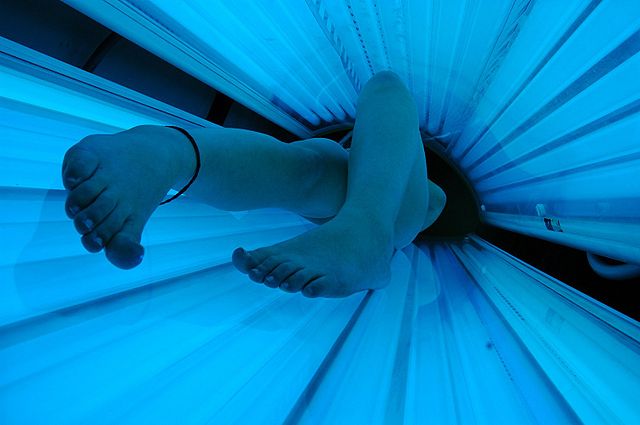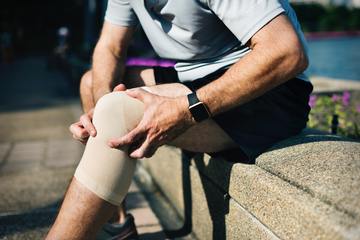Sun Safety Tips for UV Safety Month
When people think of cancer, they may immediately think of some of the types that get a lot of publicity, like lung cancer or breast cancer. However, more people should be aware that skin cancers are by far the most common types of cancers, and 1 in 5 Americans will develop skin cancer before reaching 70 years old. In the United States, more skin cancer cases are diagnosed annually than all other types of cancer combined. Since harmful sun exposure is often responsible for cases of skin cancer, we’ve compiled some sun safety tips this UV Safety Month to help you ensure your time spent outdoors isn’t causing you harm!
What are UV rays and why are they harmful?

UV stands for ultraviolet and describes the types of rays produced by sunlight and other light sources, such as tanning beds and some types of lighting and lasers. UV rays have been demonstrated to increase one’s risk of developing skin cancers, both the basal cell and squamous varieties and the more dangerous melanomas. Now that you have a clear idea of why UV safety is so important, let’s discuss some sun safety tips!
Wear sunglasses and protective clothing
Long-term exposure to the sun can seriously damage your eyes, even leading to blindness in the worst cases. More common are cataracts, which occur when the lens of the eye becomes cloudy. Wearing sunglasses when outdoors can be a very effective way to reduce your risk of developing cataracts. Hats, long-sleeved shirts, and pants are other effective ways of preventing the sun’s rays from damaging your skin.
Apply sunscreen

If you’re going to be spending time outdoors, it’s important to wear sunscreen. The higher the SPF, the better the sun protection, but at a certain point the additional value provided by higher SPF becomes minimal. Experts recommend a minimum of SPF 30. Additionally, it’s important to ensure you’re using sunscreen properly. This means reapplying 1 ounce of sunscreen every two hours when you’re exposed to the sun, and more often if you’re sweating or swimming. You should also ensure that you’re using the right type of sunscreen. Look for sunscreens that offer “broad-spectrum” protection, meaning you’ll be defended against sunburn and the type of long-term UV exposure that can lead to skin damage and skin cancer later on.
Avoid being outdoors at peak-UV times
The sun’s impact is typically strongest between the hours of 10 am and 2 pm. If possible, it’s ideal to stay indoors during this window. If you’ll be outdoors during these outdoors, try to stay in the shade and make sure you’re properly equipped with sunscreen and protective clothing.
Avoid indoor tanning

Image credit: EvilErin via Wikimedia Commons
Many people still go to tanning salons so they can attain the golden look they desire. Regardless of how happy you may feel about the glow you get from indoor tanning, it’s unequivocally harmful to your skin and should be avoided. One study of over sixty women who had developed melanoma prior to age 30 found that 97% of them had used indoor tanning beds. In fact, more people develop skin cancer from indoor tanning than get lung cancer from smoking.
We hope you found these sun safety tips to be informative this UV Safety Month. Be sure to follow the advice given by medical professionals to keep yourself safe while you enjoy time outdoors! If someone you know is battling skin cancer or is a survivor, you can support the cause by wearing something from our skin cancer awareness gear collection!
Arthritis Facts to Help Raise Awareness
Did you know that arthritis is the #1 cause of disability in the U.S.? If you didn’t, you’re certainly not alone. Many people underestimate the prevalence and severity of arthritis if it’s not something they regularly encounter. To help promote some awareness of this cause, we wanted to share some facts for May, which has been designated as Arthritis Awareness Month.
What is Arthritis?

Arthritis is something of a catch-all term used to label over 100 types of conditions that revolve around joint pain. The most common types of arthritis are osteoarthritis and rheumatoid arthritis. Osteoarthritis involves the deterioration of cartilage over time which allows bones to rub together, leading to pain and swelling. Rheumatoid arthritis, on the other hand, is an autoimmune disorder that involves the immune system mistakenly attacking the lining of the joint capsule. Two other common forms of arthritis are gout and fibromyalgia. Gout results from the buildup of uric acid that causes inflammation and joint pain, most commonly in the big toe. Fibromyalgia is more far-reaching and can arise for several reasons, but it results in pain throughout the body, fatigue, and difficulty concentrating.
Arthritis Risk Factors
Arthritis is complicated, and can often arise from a multitude of factors. However, there are some factors that medical professionals know to increase one’s risk of developing arthritis. Some of these risks include obesity, repetitive movements, prior injuries, inactivity, smoking, and old age. Females have a higher risk of developing most types of arthritis.
Arthritis Facts
More than 50 million adults in the U.S. have arthritis, but this problem tends to get less recognition than many other ailments. However, arthritis is not limited to adults. Some 300,000 babies, kids, and teens also have arthritis. Besides the pain and discomfort arthritis causes, it’s also costly in other ways. In many cases, arthritis limits or otherwise impacts individuals’ ability to work. When accounting for lost wages and medical expenses, the annual cost of arthritis and similar disorders totals over $156 billion.
Tips to Manage Symptoms

Since there is no cure for arthritis, those who are dealing with it have to avail themselves of other ways of managing their symptoms. Aerobic exercise, even just taking a walk, is recommended to help reduce the pain of arthritis. This is doubly good because maintaining a healthy weight is important for preventing arthritis and for lessening its severity in those who have it. In fact, more than a third of people who are obese have arthritis. Just be sure that the exercise you’re doing isn’t strenuous to the point where it’s putting more strain on your joints.
If you’d like to show support to all of those who are battling arthritis every day, we have some arthritis awareness gear you can wear to support them. This gear is perfect attire for an Arthritis walk if you can find one in your area to participate in this Arthritis Awareness Month!
4 Common Autism Myths
As autism diagnoses have been on the rise for many years, many more people are now aware of autism than in the past. However, along with this increased awareness, lots of people also have mistaken beliefs about autism. This Autism Awareness Month, we wanted to briefly explore some of these autism myths so that readers […]
Autism Awareness Day – We’ve Come a Long Way
April 2nd of this year marked the 12th Annual Autism Awareness Day. In honor of the occasion, we wanted to present some autism facts and give thanks to those who are dedicating their lives to helping individuals with autism. What is Autism? Autism, or autism spectrum disorder (ASD), is a neural development disorder. It is often characterized by […]
Colorectal Cancer Facts to Boost Awareness
For too long, colorectal cancer wasn’t talked about nearly enough, especially given its significant impact on so many families. That started to change two decades ago when groups began advocating for increased awareness and research. March is now designated as Colorectal Cancer Awareness Month, providing a chance for people to inform themselves about this form […]
March is Multiple Sclerosis Awareness Month
Every March is Multiple Sclerosis Awareness Month, a time to show your support for everyone whose life is impacted by this disease. MS is still without a cure, and it can be unpredictable and debilitating to those who face it. Sadly, scientists don’t fully comprehend all of the mysteries of MS, making the path toward a cure […]
5 Cancer Prevention Tips to Help Reduce Your Risk
February is National Cancer Prevention Month, so we wanted to bring you some cancer prevention tips. Given cancer’s prevalence in society, if you or a loved one hasn’t faced it, you almost certainly know someone else close who has been affected. As scary and sometimes mysterious as cancer can be, the scientific community has established […]
Thyroid Awareness Month: Key Facts to Know
Did you know that up to 20 million Americans have thyroid issues? What’s more is that many of these individuals don’t even know that something is wrong. This January, as part of Thyroid Awareness Month, we want to bring attention to the surprisingly common problems that impact people because of their thyroid. Armed with some knowledge, […]
January is Cervical Cancer Awareness Month
Each January is Cervical Cancer Awareness Month, with efforts made to inform individuals of the details of this particular cancer. Keep reading to learn some more important facts that you can share with friends and loved ones. Cancer Rates Sadly, the American Cancer Society predicts that over 13,000 women will be diagnosed with cervical cancer […]
Coping With An Illness During the Holidays
Christmas is a wonderful time when homes are decorated with festive lights and people of all ages put aside their differences to share in the magic of holiday cheer. Although the holidays are a joyous time, things do not always go as planned for those with chronic illnesses and diseases. While we all have to […]
